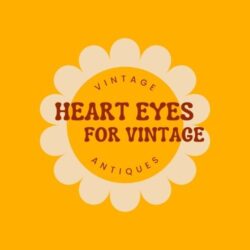If I had to narrow it down and choose JUST ONE style of furniture – I don’t know that I could do it! There are so many cool features to each type!
I’d say that my top favorite would be what is considered “contemporary” but most commonly known as Mid-Century Modern. The sleek and clean lines are just incredibly appealing to me! I also love the over the top and delicate Victorian, Duncan Phyfe, Arts & Craft, and Art Nouveau.
There was not one dominant style of furniture in the Victorian period. Designers rather used and modified many styles taken from various time periods in history like Gothic, Tudor, Elizabethan, English Rococo, Neoclassical and others. The Gothic and Rococo revival style were the most common styles to be seen in furniture during this time in history.
Duncan Phyfe: (thankful for Wikipedia!)
Duncan Phyfe (27 April 1770 – 16 August 1854)[1] was one of nineteenth-century America’s leading cabinetmakers. Although he did not create a new furniture style, he interpreted fashionable European trends in a manner so distinguished and particular that he became a major spokesman for Neoclassicism in the United States, influencing a whole generation of American cabinetmakers.
This may be the most oddly named one to me – it definitely doesn’t look like MY arts & crafts ;P
The Arts and Crafts movement emerged from the attempt to reform design and decoration in mid-19th century Britain. It was a reaction against a perceived decline in standards that the reformers associated with machinery and factory production. Their critique was sharpened by the items that they saw in the Great Exhibition of 1851, which they considered to be excessively ornate, artificial, and ignorant of the qualities of the materials used. Art historian Nikolaus Pevsner writes that the exhibits showed “ignorance of that basic need in creating patterns, the integrity of the surface”, as well as displaying “vulgarity in detail”.
Art Nouveau (/ˌɑːr(t) nuːˈvoʊ/ AR(T) noo-VOH, French: [ “New Art”) is an international style of art, architecture, and applied art, especially the decorative arts. The style is known by different names in different languages: Jugendstil in German, Stile Liberty in Italian, Modernisme in Catalan, and also known as the Modern Style in English. It was popular between 1890 and 1910 during the Belle Époque period,[1] and was a reaction against the academic art, eclecticism and historicism of 19th century architecture and decoration. It was often inspired by natural forms such as the sinuous curves of plants and flowers.[2] Other characteristics of Art Nouveau were a sense of dynamism and movement, often given by asymmetry or whiplash lines, and the use of modern materials, particularly iron, glass, ceramics and later concrete, to create unusual forms and larger open spaces.
Here’s a list of the general categories:
1600-1690 Jacobean
1640-1700 Early American
1690-1725 William and Mary
1700-1755 Queen Anne
1700-1780 Colonial
1714-1760 Georgian
1720-1830 Penn. Dutch
1750-1790 Chippendale
1760-1795 Robert Adam
1765-1800 Hepplewhite
1780-1820 Federal
1780-1820 Sheraton
1795-1848 Duncan Phyfe
1800-1840 American Empire
1820-1860 Shaker
1840-1910 Victorian
1880-1910 Arts and Craft
1910-1930 Art Nouveau
1960-1990 Contemporary
Thank you for reading and be sure to check out our Etsy Shop!

